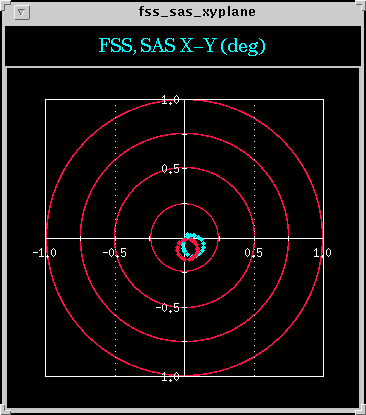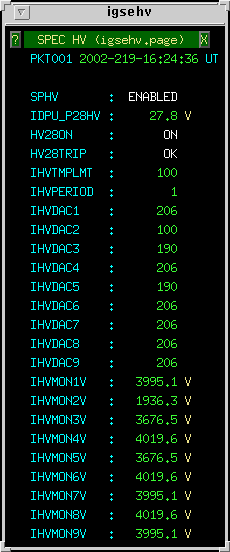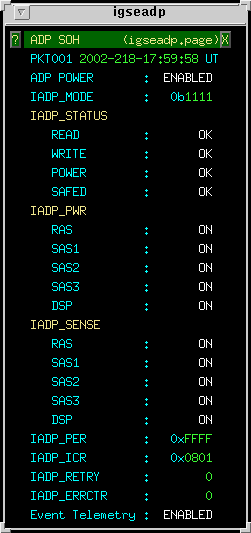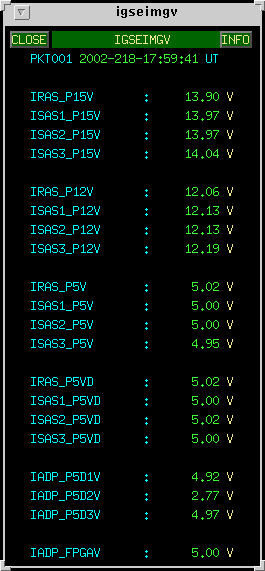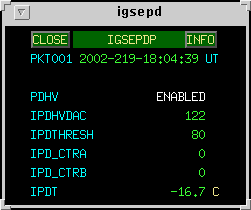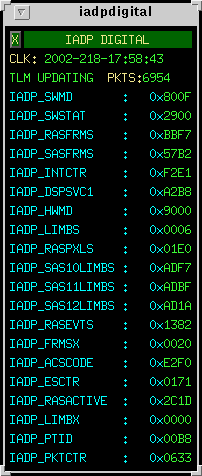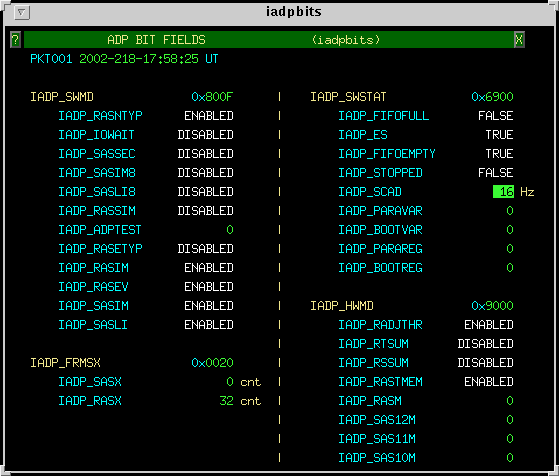|
Displays information on counts/sec received by each detector, both front
and back segments. The front segment counts are usually high if the
thin shutter is out. Rates in detector 8 can get high due to noise in
transmitting the data from RHESSI's AFT antenna, so when receiving from
AFT antenna, counts on GeD 8 are much higher than those for other
detectors. It is possible to see which antenna is in use for
receiving data by looking at SatTrack's "bar" window. Also note that
detector 2 rear rates are null because it is operated at a voltage
too low to divide it into segments -- all the counts end up in
the front channel.
Particle
background is displayed under "particle detector". Currently
this display is backwards -- "Hi-E" is the lower-energy
channel, which counts primarily electrons. There are often
"storms" of electron precipitation over North America (i.e.
during Berkeley and Wallops contacts). These can also cause
rates (slow-valid and fast valid) to go very high. A solar
flare pushes front rates much higher than the rears; electron
precipitation makes the rear rates higher than the fronts.
Trouble is when a single detector is very different from
all the others (except for the two known anomalies above).
In this circumstance, alert David Smith.
The other particle detector channel
counts protons (cosmic rays and SAA protons). It will seldom
read more than "1" during contacts.
Monitor rates are averaged over 10
seconds, so the window updates only every 10 secs.
SLOW VALID
- lower-level discriminator for analysis, slow because it's precise
FAST VALID
- higher-level discriminator (higher energy threshold because it's fast)
SLOW > ULD
- counts events too high in energy to analyze: i.e. cosmic rays.
Reset
- counts the number of times per second that the electronics have
to drain the capacitor in the preamp of each detector. If one gets
very high, that detector has become leaky -- alert David Smith.
%Live Time
- percentage time that the segment is *not* busy analyzing events.
Generally over 90% except in the case of a very big flare or precipitation
event.
|






